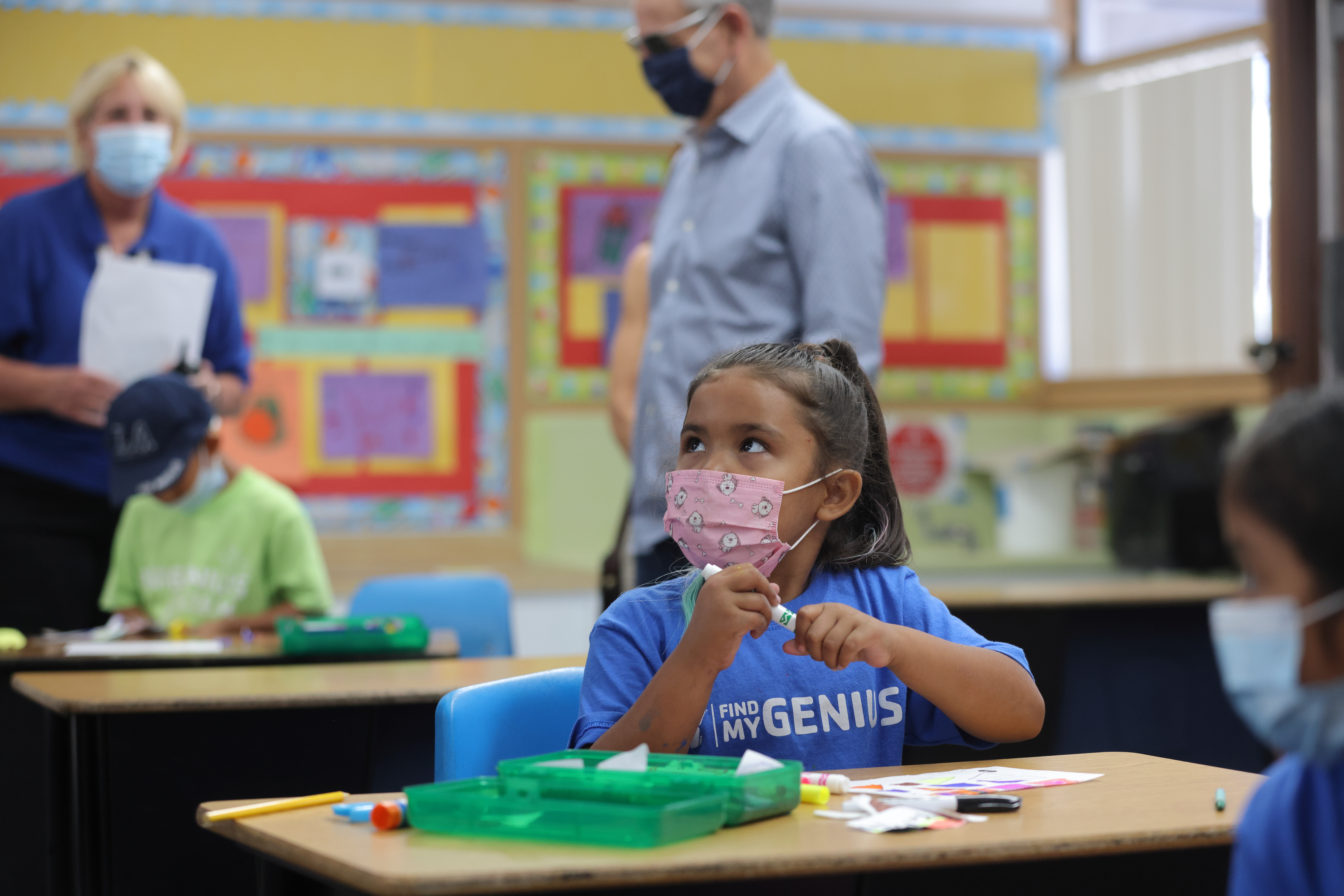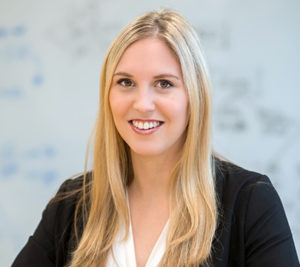Overdeck Family Foundation Enhances Education Field

A leading supporter of BellXcel’s work, the Overdeck Family Foundation has funded BellXcel since 2019.
—-
Gemma Lenowitz has served as a program officer in the Inspired Minds portfolio at the Overdeck Family Foundation since 2018. Previously, she served as a STEM coordinator and 12th grade lead at MESA Charter High School, where she founded and coached a robotics team, taught Bioengineering and Computer Science, and implemented edtech and project-based learning.
BellXcel: What are your big-picture goals at Overdeck?
 Gemma: Our mission is to measurably enhance education inside and outside the classroom. We focus exclusively on education, funding efforts both inside and outside of school in the areas of early childhood, informal STEM education, and K-9 programs that include supporting educators and student-centered learning environments.
Gemma: Our mission is to measurably enhance education inside and outside the classroom. We focus exclusively on education, funding efforts both inside and outside of school in the areas of early childhood, informal STEM education, and K-9 programs that include supporting educators and student-centered learning environments.
Our priority for the next three years is to continue to scale cost-effective models and organizations that accelerate improvement in academic and socioemotional outcomes for all kids. Specifically, we hope to use our grantmaking and strategic support to unlock innovation, build and strengthen organizational capacities, help grantees generate evidence, and support grantees in attracting follow-on funding. We will continue to fund research, learning, and measurement to ensure that we understand the outcomes of our grantmaking.
BellXcel: How does BellXcel fit into that picture? What caught your attention about the organization?
Gemma: Thanks to the Institute for Educational Sciences, the Wallace Foundation and other evidence aggregators, there are reviews that demonstrate program effectiveness in alignment with ESSA’s tiered levels of evidence. Beyond BellXcel having the highest level of evidence, it was the breadth of research historically and in progress and the learning and improvement orientation of the team that stood out to me.
If you zoom out and think about after-school programs, they’ve been providing positive experiences for youth for decades, but it was clear that BellXcel was thinking about how to do that in the 21st century, leveraging edtech. The design is more efficient, with technology solutions that don’t replace human interaction, but actually eliminate some of the onerous administrative tasks so programs can operate more smoothly. What I quickly noticed about the platform is that it can actually give educators more time to plan great instruction, and more time with scholars. As a former teacher and coach, I knew those were two critical elements for student success. That’s what caught our eye originally and why we chose to invest.
BellXcel: What most excites/inspires you about BellXcel’s work and future?
Gemma: The first piece is just impact. We think the program can continue to have strong outcomes and provide the right delivery model for every site to see success for their kids. The second piece is that the tech enables a level of scalability. That’s new, I think, to the out-of-school time field. They’re the first SaaS Enterprise solution that I’ve heard about that centralizes all of the components on the platform, which makes it able to scale faster. And then on the other side of that, there’s the demand. The contracts that BellXcel has won recently underscore that there are so many kids out there who could benefit from these services, and the adults in decision-making capacity in their communities believe that, too. I really appreciate that they are ready to deliver, because this moment asks so much of teachers and parents.
BellXcel: What excites you the most about philanthropy right now?
Gemma: I’m really excited about the conversations about proximity and empathy in tech and in philanthropy. I think educator and student needs evolved faster than ever during COVID. And, educators and ed tech organizations need to stay on top of what’s happening and develop services and products that resonate with their audience.
Funders didn’t previously have a lot of insight into what their beneficiaries needed, and the grantee often acted as the intermediary. Now, I think funders can get much sharper insights into the current needs so that we’re not relying on perception or old data. And, philanthropy is now more visibly and loudly encouraging nonprofits to make sure that their solution centers the experiences of their target population and that they use tools to gather better data. For example, we use the “net promoter” score with a lot of our grantees to understand the user experience on their platform or with their service. And now through the Fund for Shared Insight, (a group of philanthropists), and a service called Listen for Good, (a survey tool), we can put the end user’s voice at the forefront. By elevating the voices that are least heard in systems, we can match products and services to their specific needs.
BellXcel: What are the greatest opportunities you see in K-12 education and OST?
Gemma: There are a lot of elements that were developed during COVID that we think should stay, including an increased focus on the home-school connection that will continue to be a focus for the foundation. This includes thinking about school readiness supports at home. What does it mean for a child to be school ready? What does it mean for a school to be ready for that child? There’s a more racially and ethnically diverse set of students than ever before in public schools across the country this year, but they are also diverse in terms of interests and talents, too. So, how do we think about elevating those unique assets? In philanthropy, we’ll continue to support the scale of evidence-based practices and innovation to meet these and other new demands and challenges as they arise.
About Overdeck Family Foundation
Founded in 2011 by John and Laura Overdeck, Overdeck Family Foundation‘s goal is to provide all children the opportunity to unlock their potential. Grantmaking and strategic support focus on unlocking innovation, evidence, and growth opportunities for organizations and researchers that are committed to accelerating key academic and socioemotional outcomes for all children.

